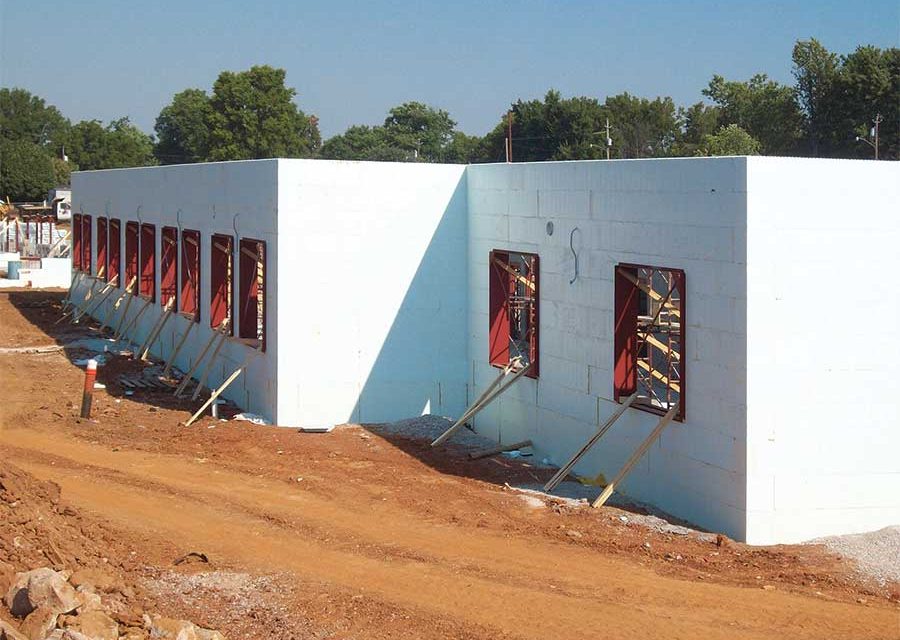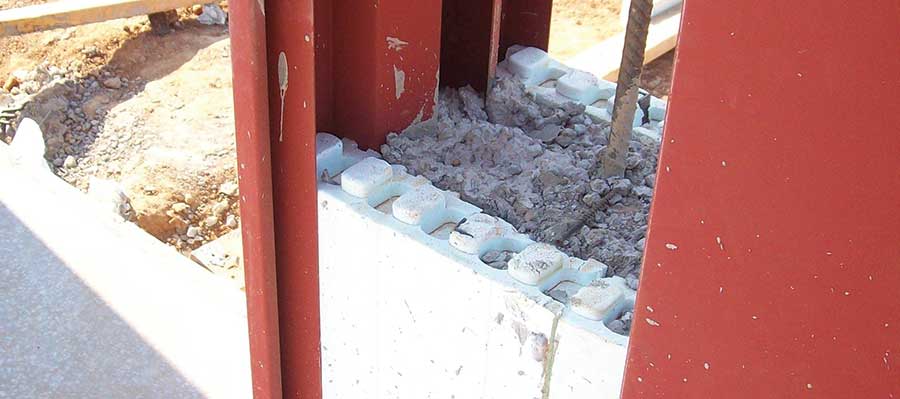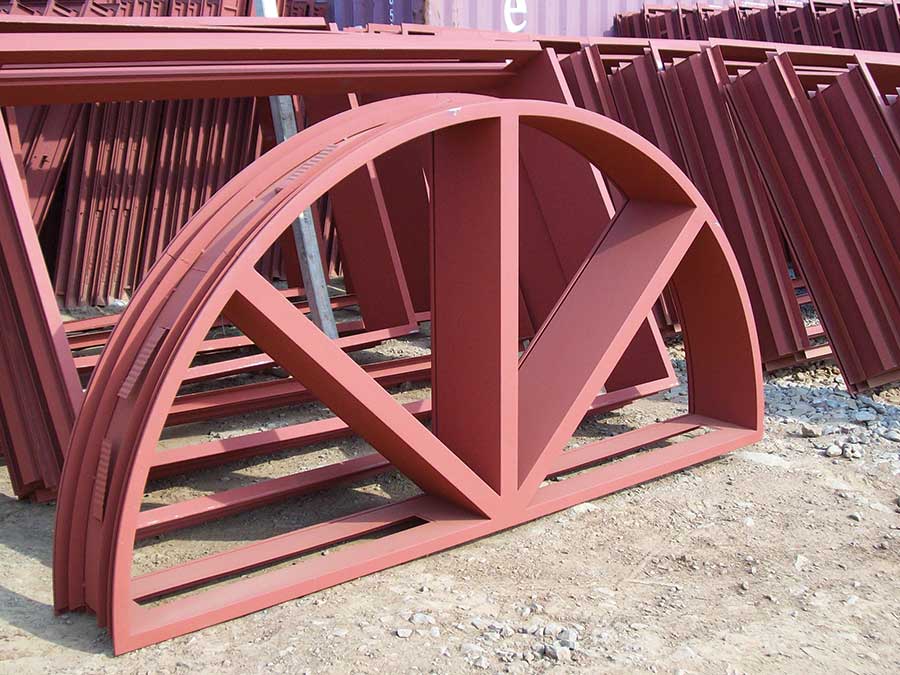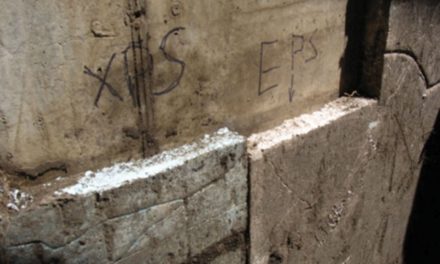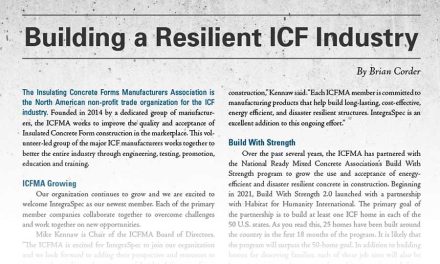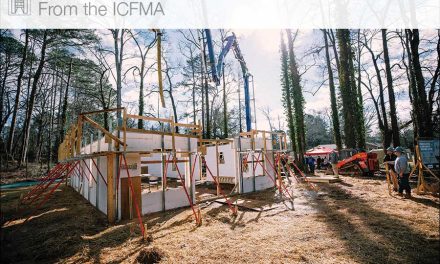A New Alternative for ICF Openings
Story and Photos by J. Andrew Keith and Chris Keith
Several methods and products exist for blocking out, or “bucking,” window and door openings on ICF projects. These include wooden bucks, vinyl bucks, EPS foam, and light-gauge steel. (See “Wooden Window Bucks in the Apr. ‘05 and “Vinyl Window Bucks” in the Aug. ‘05 issues of ICF Builder for more information).
This article discusses a fourth alternative for blocking out ICF openings, Integrated Framing Assemblies (IFAs). The authors claim that while IFAs do serve as block-outs, thinking of them as traditional bucks would be insufficient. Made from heavy-gauge steel, their strength, versatility, and other capabilities make them ideal for heavy commercial applications.
Similarities to Traditional Bucks
IFAs are similar to traditional bucking systems in that they provide a solution for forming door and window openings in the building envelope. Like other solutions, they are installed prior to the concrete pour and ensure that the concrete form contains openings, at the correct dimensions, for doors and windows.
Another similarity is that IFAs require some bracing during the pour. Finally, like some bucks and unlike others, IFAs are made of steel.
Differences
IFAs, however, also differ from regular bucks in several important ways.
Wood, vinyl, and lightweight steel bucks are designed primarily for the residential market. IFAs, however, are designed and engineered specifically for the heavy commercial ICF market.
For example, IFAs are both the block-out method and the window or door frame that a contractor would later need to install under conventional bucking methods. This saves contractors the time and labor costs that would be incurred by returning to each opening.
Another difference is that IFAs arrive at the jobsite prepped for hardware installation.
Three more differences illustrate how IFAs make it easier for the subcontractor trades: IFAs come with closure returns on the exterior face that make finishing easy for the masonry subcontractor. They come with a drywall return on the interior side, coordinating with the interior wall subcontractors. And they also include vibrator pockets in the sills to make it easy to consolidate concrete under the window.
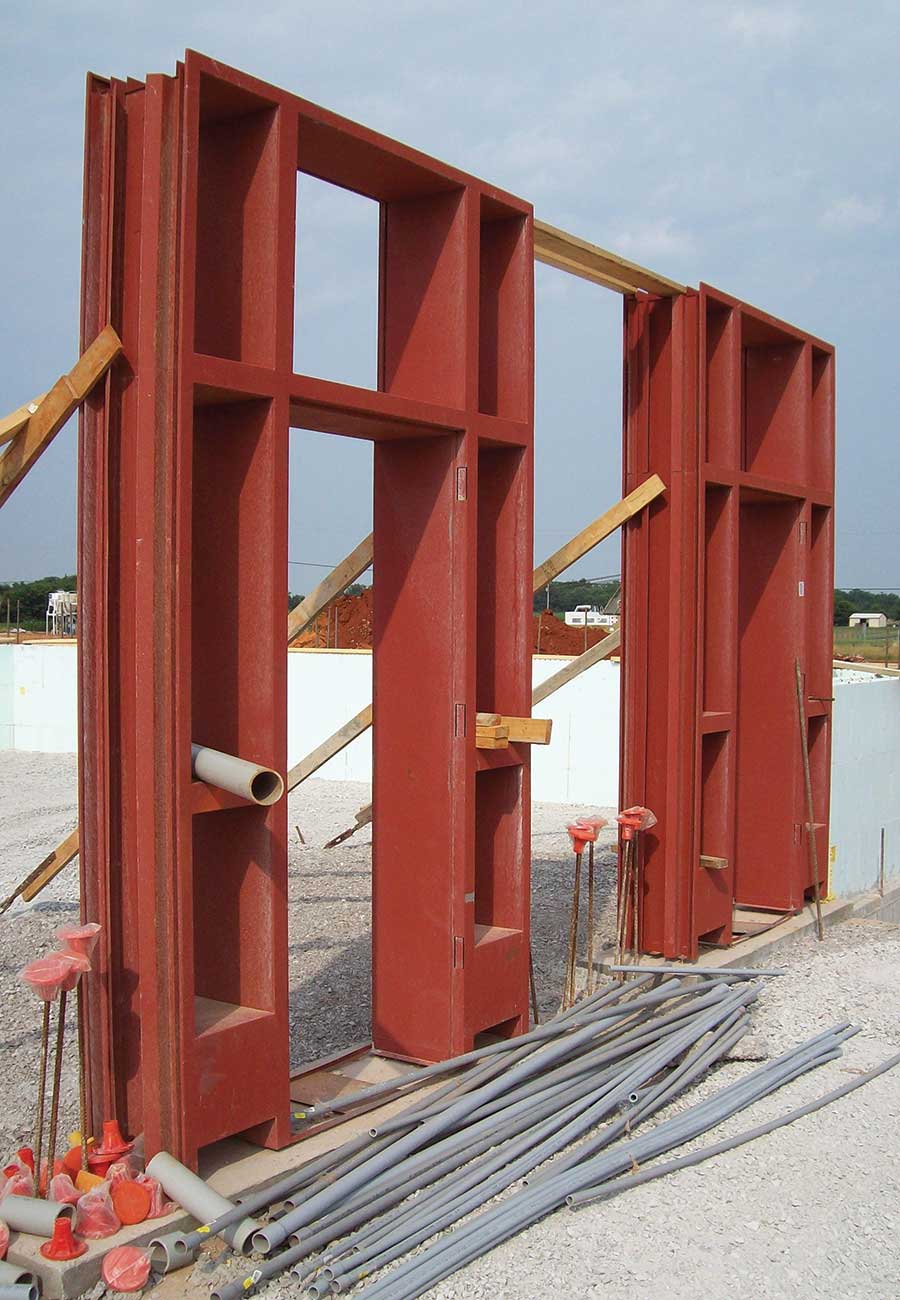
Door IFAs can be set into the floor slab, providing a mechanical connection between it and the concrete wall core.
Cumulatively, these differences highlight IFAs’ suitability for heavy commercial ICF construction. These time and labor savings may not be realized on a home with 15 openings, or even a strip-mall with 30 openings. However, on a project with hundreds of openings, the impact becomes significant.
The Joseph Warren Middle and High School in Bowling Green, Kentucky, is one example. The project, which has almost 500 openings, used Stala IFAs from Atlas, with a significant impact on the project’s bottom line.
Made from heavy gauge steel, IFAs contain an angled alignment flange that fits into the cavity of an ICF wall. When the concrete is poured, it surrounds this flange and secures the frame permanently in the wall.
Similarly, builders can anchor door IFAs, via jamb extensions, into the slab prior to pouring the concrete. This means that, once the concrete is set, between the alignment flange anchoring an IFA into the wall and the jamb extensions anchoring it into the slab and footer, an IFA helps mechanically connect the elements of the building envelope. This structural strength is primarily desirable in the commercial market where, for example, contractors are
building schools that will also serve as community shelters in times of severe weather. Obviously, such anchoring also significantly increases the need for precision and correct labeling of IFAs for specific openings.
The anchoring flanges may also contribute to energy efficiency, as they eliminate any possibility of air infiltration around the opening.
Some have expressed concern that steel IFAs can conduct exterior temperatures into the interior of the building. Stala has addressed this by offering an optional thermal break in their IFAs.
Summary
Although commercial construction still accounts for only a small portion of the ICF market, its potential is already evident. This sector presents challenges for ICFs, including how to most efficiently block out door and window openings. Heavy-duty steel blockouts are one option. And while these IFAs do buck ICF openings, this is only one of several tasks they accomplish on a job site.
J. Andrew Keith is president of The Atlas Companies. He has almost forty years of experience in the construction industry. He can be contacted at 502.779.2100.

